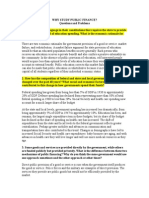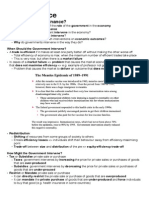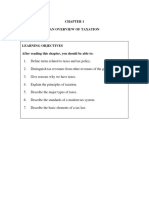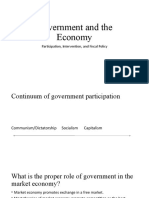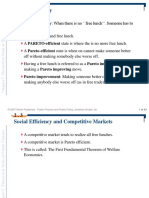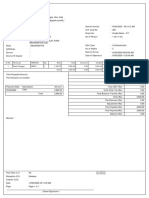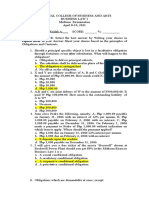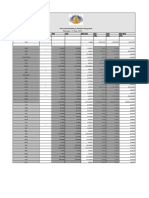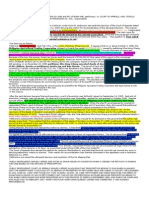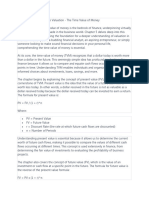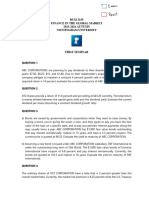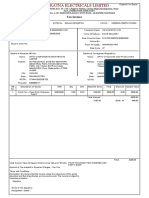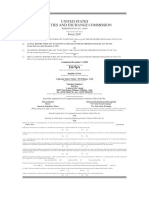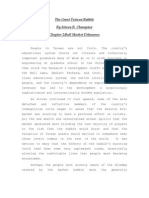Chapter 1: Introduction to Public Finance
Chapter 1 Introduction
to Public Finance
McGraw-Hill/Irwin 1-1.
Copyright © 2009 by The McGraw-Hill Companies, Inc. All rights reserved
� Chapter 1: Introduction to Public Finance
Introduction
The role of government in making a free market possible
Why free markets usually work well for consumers
Taxes, subsidies, regulations, and inefficiency
Problems for the free market
Problems for the government
Taxes and government spending in the United States
1-2
� Chapter 1: Introduction to Public Finance
The Role of Government in Making a Free
Market Possible
• A free market consists of the voluntary interaction of
producers and consumers of goods and services.
• Is it necessary to have a government?
Positive Economics Normative Economics
What is happening? Is it good or bad?
1-3
� Chapter 1: Introduction to Public Finance
Why Free Markets usually Work Well for
Consumers
Free markets are efficient • Productive efficiency
• Allocative efficiency
Figure 1.1
$14 S = (MC)
$12
$10
$8
$6
D = (MB)
90 100 110 Q
1-4
� Chapter 1: Introduction to Public Finance
Taxes, Subsidies, Regulations, and Inefficiency
A tax levied on producers or a tax levied on consumer
Figure 1.2 Figure 1.3
P P
S`
$14 $14
S S
$12 T=$4 $12
$10 T=$4 $10 T=$4
$8 $8
T=$4
$6 D
$6 D
D`
90 100 110 Q 90 100 110 Q
…produces the same effect.
A decrease in quantity.
1-5
� Chapter 1: Introduction to Public Finance
Taxes, Subsidies, Regulations, and Inefficiency
Deadweight loss • An inefficiency which causes
a reduction in society’s welfare
Figure 1.4
$14 – S
$12 – B
$10 – T=$4 D
$8 –
A Deadweight loss is
$6 – D represented by area
= BAD
90 100 110 Q
1-6
� Chapter 1: Introduction to Public Finance
Taxes, Subsidies, Regulations, and Inefficiency
A subsidy given to producers or a subsidy given to consumers
Figure 1.5 Figure 1.6
P P
$14 S $14
S
$12 $12
S=$4
S=$4 S`
$10 $10 S=$4 D`
$8 $8
S=$4
$6 D $6 D
90 100 110 Q 90 100 110 Q
…produces the same effect:
an increase in quantity
1-7
� Chapter 1: Introduction to Public Finance
Taxes, Subsidies, Regulations, and Inefficiency
Figure 1.7
$14 – S
$12 – B
D
$10 – S=$4
$8 –
Deadweight loss is
A
represented by area
$6 – D
= BAD
90 100 110 Q
1-8
� Chapter 1: Introduction to Public Finance
Problems for the Free Market
Externalities: Chapters 2 and 6
Figure 1.8
P MSC
Negative
B
externality $14 – S (MC)
D
$12 – $4
MSC = (MC + marginal $10 –
A
environmental damage)
$8 –
Solution? $6 – D (MB)
A corrective tax.
90 100 110 Q
1-9
� Chapter 1: Introduction to Public Finance
Problems for the Free Market
Externalities: Chapters 2 and 6
Figure 1.9
Positive P
externality $14 –
B
S (MC)
D
$12 – $4
MSB = (MC + marginal $10 –
A MSB
benefit to other people)
$8 –
Solution? $6 – D (MB)
A corrective subsidy.
90 100 110 Q
1 - 10
� Chapter 1: Introduction to Public Finance
Problems for the Free Market
Public Goods: Chapter 3
• A public good has 2 properties:
1. Non-rivalry
2. Non-excludability
• Free-rider problem
Social Insurance: Chapters 5 and 6
• Old-age insurance – Social Security
• Health insurance – Medicare
1 - 11
� Chapter 1: Introduction to Public Finance
Problems for the Free Market
Income distribution, taxation and efficiency:
Chapters 7, 8 and 9
• Income redistribution
• Taxation – progressive, regressive,
and proportional
• Efficiency trade-offs
Education: Chapter 11
• Private or government
• Quality and price variations
• Consumption externality
1 - 12
� Chapter 1: Introduction to Public Finance
Problems for the Free Market
Low income assistance: Chapter 12
• Medicaid
• Earned income tax credit (EITC)
• Unemployment compensation
• Disability insurance
• Worker’s compensation
1 - 13
� Chapter 1: Introduction to Public Finance
Problems for the Government
Political economy: Chapter 3
• Island wall
Cost-benefit analysis: Chapter 4
• Compare costs against benefits
Which level of government?: Chapter 10
• Federal, state, and local
• Types of taxes
Borrowing instead of taxing: Chapter 13
• Borrowing and the effects of borrowing
1 - 14
� Chapter 1: Introduction to Public Finance
Taxes and Government Spending in the U.S.
Question 1:
30%
a) U.S. taxes (federal, state, and local) as a % of GDP: _____
b) U.S. federal taxes as a % of GDP: _____20%
10%
c) U.S. state and local taxes as a % of GDP: _____
d) OECD taxes as a % of GDP: _____ 40%
e) Scandinavian taxes as a % of GDP: _____50%
Figure 1.10 Taxes as a percent of GDP
U.S. Federal S&L
OECD
Scandinavia
10% 20% 30% 40% 50% 60%
1 - 15
� Chapter 1: Introduction to Public Finance
Taxes and Government Spending in the U.S.
Question 2: Federal tax revenue as a % of GDP is
(much higher than, about the same as, much lower than)
forty years ago.
Figure 1.11
% of GDP
24%
23%
22%
21% Federal
20% Spending
19%
18% Federal
17% Taxes
16%
1965 1970 1975 1980 1985 1990 1995 2000 2005 Year
1 - 16
� Chapter 1: Introduction to Public Finance
Taxes and government spending in the U.S.
Question 3: How has federal debt changed over time?
Figure 1.12
% of GDP
50%
45%
40%
Federal
35%
Debt
30%
25%
1965 1970 1975 1980 1985 1990 1995 2000 2005 Year
1 - 17
� Chapter 1: Introduction to Public Finance
Taxes and government spending in the U.S.
Question 4: What are the important sources of federal
tax revenue?
Figure 1.13
Taxes
Other
10%
Corporate
10%
Personal
Income
45%
Payroll
35%
1 - 18
� Chapter 1: Introduction to Public Finance
Taxes and Government Spending in the U.S.
A serious problem looms on the horizon.
Table 1.2
Medicare, Medicaid, and Social Security (“The Big 3”) as a % of GDP
“The Big 3” Fed Spending Fed Taxes Fed Deficit
2000 8% 20% 20% 0%
2010 10% 22% 20% 2%
2020 12% 24% 20% 4%
2030 14% 26% 20% 6%
2040 16% 28% 20% 8%
1 - 19
� Chapter 1: Introduction to Public Finance
Summary
The role of government in making a free market possible
Why free markets usually work well for consumers
Taxes, subsidies, regulations, and inefficiency
Problems for the free market
Problems for the government
Taxes and government spending in the United States
1 - 20
� Chapter 1: Introduction to Public Finance
Preview of Chapter 2:
Externalities and the Environment
The economist’s approach to pollution
Economic analysis of a pollution tax and
tradable permits
Applications: Acid rain and global warming
1 - 21


